Just 90 minutes north of Auckland (or half an hour south of Whāngārei), a golden hook of white sand beach unfurls from Bream Tail in the south to prominent Bream Head in the north. The striped tower of the Marsden Point Oil Refinery flue is dull in the distance, Lego-sized and overshadowed by the craggy emerald silhouette of Whāngārei Heads and Mount Manaia.
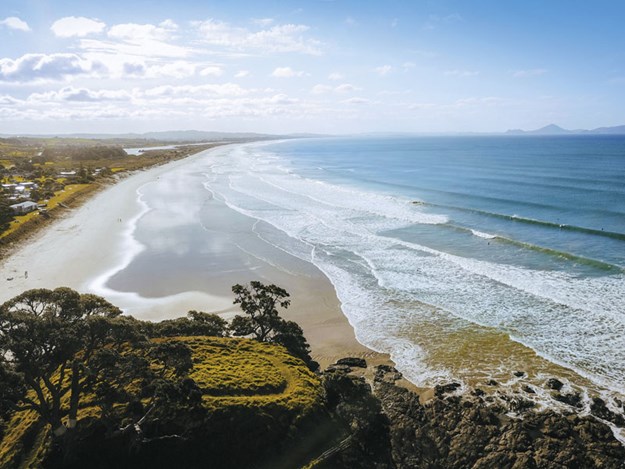
This strip of east coast is a holidaymakers’ paradise. Long, empty beaches, decent surf, an abundance of seafood – there’s little choice but to switch off and run on Bream Bay time. In summer, tourists flock to the beaches and campgrounds, all wearing the official uniform of jandals, a singlet tan and a smear of sunscreen.
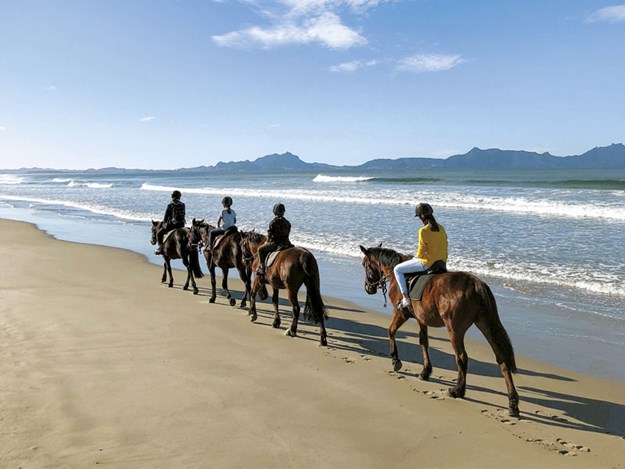
Come February/March, they trudge back to work, leaving the locals to settle into a calmer way of life. This is a down-to-earth place where residents are fiercely protective and proud of their history.
Organised activities, high-octane adventure sports and shopping strips are few and far between. Instead, Mother Nature lays out a sumptuous selection of walks, beaches and natural wonders from which to pick and choose.
One Tree Point
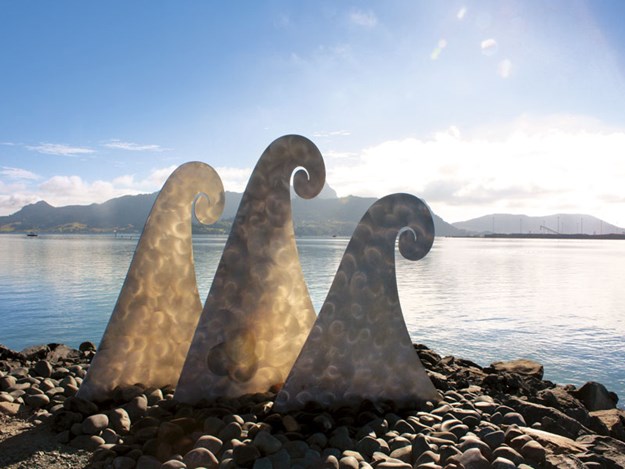
The thin grass verge between One Tree Point Road and Marsden Bay is dotted with staircases leading down to the beach. At high tide, swimmers can step straight from the wooden steps into the clear waters; at low tide, there’s a bit of a muddy walk to the sea.
Shallow, and therefore warm, One Tree Point is perfect for younger children. A walkway off Paradise Point Road and Arts Place leads to a grassy reserve and excellent swimming spots. Look for the twin chairs opposite the Marsden Yacht Club that invite walkers to sit back and enjoy the view.
Marsden Point
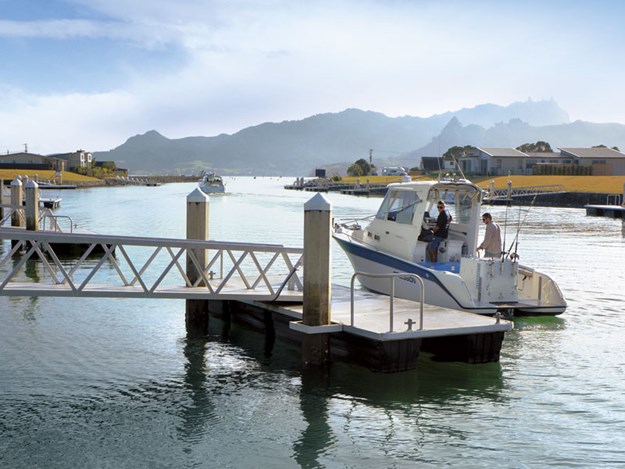
Yes, it seems odd to walk along a white-sand, turquoise-water beach with an oil refinery looming metres behind. But this section of sand is as good as the more populated areas, if not better due to the low numbers of users.
Marsden Point is more popular with fishermen, crabbers and dog walkers than sunbathers. It used to be a popular breeding ground for pipis, mussels and more, but the taking of shellfish is currently prohibited. Parking and access are at the end of Mair Road.
Ruakākā and Waipu Cove
The two most favoured beaches share many traits. Both are speckled with bobbing surfers thanks to an often generous swell and each are monitored by surf life-saving clubs during summer with flagged zones for safe swimming. Both are easily accessible with ample parking areas.
Ruakākā in the north and Waipu Cove in the south are divided by Uretiti in the middle – the slightly more wild, and often risqué sibling. The area 200m south of the DOC campground at Uretiti is a popular nudist beach – something to keep in mind when undertaking a leisurely walk in that direction.
Langs Beach
Picture the quintessential perfect beach… hear the waves crash and smell the salt air? There’s a good chance that imagination isn’t far from reality when it comes to Langs Beach. With rock pools, pōhutukawa trees, soft white sand and rolling waves, this is a beach that inspires rapturous re-tellings and repeat visits.
The main road is sprinkled with a dusting of sand, and many a driver has been forced to pull over to avoid swerving when distracted by the view. Separated from the long arm of Waipu Cove by a rocky coastline, Langs offers excellent swimming as the water is deep and clear; however, there are no surf lifeguards here and facilities are limited.
There is a toilet at the southern end but that’s it. The quietest of all of the Bream Bay settlements, Langs Beach has a small permanent population, with most homes occupied only during the summer months and long weekends. There are no stores, not even a dairy for a cold drink, so come prepared as its a fair walk to the nearest shop at Waipu Cove.
Ding Bay
Ding Bay is a local secret and is only accessible from Langs Beach at low tide. Walk to the far north end of Langs Beach and carry on around the rocks; there’s a beautiful beach with rock pools and caves to explore. Ding is also accessible via a new section of the Coastal Walkway – instead of turning off to Cove Road opposite Waterman Drive, keep following the path.
Wildlife Reserves
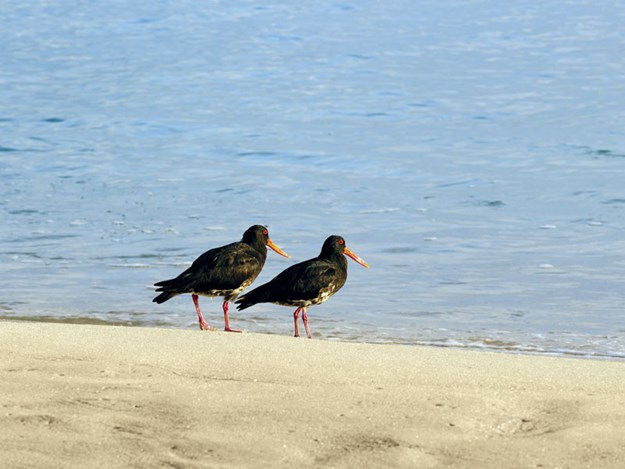
Bream Bay is an important refuge for many of New Zealand’s most threatened birds, including the fairy tern, New Zealand’s most endangered endemic bird. There are only a dozen breeding pairs located in four Northland areas, including Waipu and the Mangawhai Heads further along the coast.
Their breeding areas along the Ruakākā and Waipu estuaries have been classed as wildlife refuges and have heavy protections in place to safeguard 16 varieties of threatened birds as well as the New Zealand dotterel, little blue penguin and oystercatchers.
Come September, the year-round residents are joined by international guests as bar-tailed godwits arrive in their thousands to rest and recover from their Alaskan migration. The refuges are open to the public, but anything that disturbs the birds is banned, so no bikes or boats. Tread thoughtfully, obey Department of Conservation signage and leave the dogs behind.
Marsden Point Oil Refinery Visitors Centre
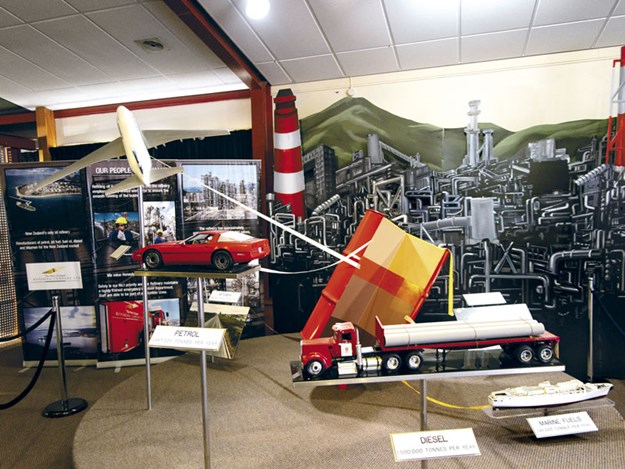
From the moment Bream Bay comes into view at the top of the Brynderwyns, it’s hard to ignore the Marsden Point Oil Refinery – especially the 120m-tall red and white flue. And why would you? New Zealand’s only oil refinery is built on the tip of Marsden Point, guarded by Mount Manaia and at the entrance to Whāngārei Harbour.
While it’s believable that the location was chosen for its scenery, it was the deep harbour and low earthquake risk that saw the refinery open in May 1964 and expand to cover the current 120ha in the 1980s. Crude oil is shipped from all over the world and 95 per cent of what arrives is turned into a saleable product – 60 per cent of New Zealand’s petrol and 70 per cent of its diesel is refined here.
A 170km pipeline runs from the refinery to Wiri in Auckland, transporting jet fuel, diesel, and 91 and 95 petrol. Granted, it’s not a generic tourism attraction, but the Marsden Point Oil Refinery Visitor Centre is a surprisingly fascinating stop. The star is the to-scale model of the refinery, which took four men in Holland 18 months to complete and cost a whopping $1 million.
A 20-minute video guides visitors around the model refinery and explains the processes involved in turning crude oil into the products we use daily. Did you know the bubbles in that glass of fizzy drink are thanks to a $40 million dollar plant that captures and purifies 50,000 tonnes of CO2 created during the refining process? The video runs on the hour and half hours from 10am, and entry is free. There’s also an onsite café (Café North; closed Saturday to Sunday). Point Marsden Highway, Marsden Point. (09) 432 8194, refiningnz.com
Waipu Caves
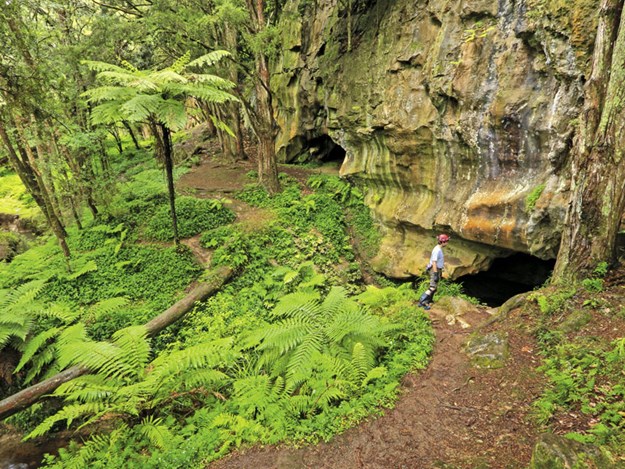
Deep beneath the farmland and native bush to the west of SH1, there’s a spooky, craggily, glittering network of karst limestone caves. The Waipu Caves are the largest cave system in Northland, and remain virtually untouched – there are no guides, no lights, no walkways or signage inside.
The opening is impressively cavernous in itself, but adventurers with the right equipment will find a whole world tucked beyond the light. Follow the water, duck beneath low rock and dodge stalagmites and stalactites, then turn off the lights and wait. Once eyes adjust, there’s a galaxy of glowworm constellations decorating the pitch black above.
It’s important to be prepared if you are to make the most of the caves. There are knee-deep (if not higher) stretches of icy water to wade through, so waterproof clothing is essential. It’s also extremely muddy and slippery, so wear appropriate waterproof footwear – leave the jandals at the beach.
While phones have decent in-built torches, no one wants to be clamouring over rocks with their phone in their hand. Bring a hefty flashlight with backup batteries, or a headlamp. Left of the caves is a 2km signposted walk, which runs through native bush, around limestone formations and up to a grassy lookout.
This walk does not lead to any caves – the cave entrance is located just beyond the car park. The walk is somewhat steep in parts but is a nice alternative for above-ground explorers. The caves are well signposted from SH1, but the road is partially gravel so drive with care – some rental-car companies have insurance clauses for gravel.
There is parking onsite, but be prepared for a grassy paddock. Heavy rain will make the parking boggy, and will also affect the waterflow in the caves, so if the weather has been particularly wet, it may be best to reschedule. Waipu Caves Road, off Shoemaker Road. doc.govt.nz.
Waipu Cycle Trail
What began as an idea from Waipu Primary School children is now an award-winning community project. The Waipu Cycle and Walkway will eventually be an almost-10km path connecting Waipu Village with Waipu Cove.
While construction and fundraising is underway to continue the project, stage one is open and ready for riders and walkers. The 2.5km trail begins at Waipu Village and heads towards the coast before currently finishing at Riverview Place. waipucyclewalk.weebly.com
Waipu Coastal Walkway
While the kilometres of white sandy beach may be perfect for relaxed strolls, walkers with a desire for a little more adventure can make their way to the far end of Waipu Cove. Whip off the shoes and paddle across the stream to the beginning of the Waipu Coastal Walkway, a 2km-plus trail that traverses rocky coastline, farmland and native bush.
The walkway, the idea of late local Alan McKenzie, was completed (and maintained) by the Waipu Lions Club. It’s hard to escape views of Whāngārei Heads and the Hen and Chicken Islands in Bream Bay, but this walk offers a slightly different perspective, and the opportunity to admire Waipu’s limestone Pancake Rocks.
It’s not suited for the very young or unsteady. Not only does the trail follow the steep coastline, but there are ladders and ropes, and many a tree to duck under. The most recent addition to the trail is the 900m connection to Dings Bay (check that it’s low tide before completing).
The walk takes approximately 1.5 hours and requires decent fitness and good shoes. Begin at the Waipu Cove stream or at the signposted entrance/exit onto Waterman Road, at the top of the hill before Langs Beach.
Mount Manaia
While technically outside of the Bream Bay region, there is no better place to view the coastline than from the top of Mount Manaia. The craggy mountain is an ever-present presence in the bay, its rocky face and distinct silhouette an enduring neighbour to residents.
It will take about an hour and a half to drive to Whāngārei Heads and the track entrance just outside of McLeod Bay, and about the same amount of time to climb the 1000-plus stairs to the top. Do give it a go – the 360o views take in Ocean Beach, all of Bream Bay, the refinery and down the harbour towards the town. Extra insider insight: celebrate smashing the stairs with a pint and hot chips at the legendary Parua Bay Tavern on the way home.
Piroa Falls
A winding gravel road, short bush walk and a safe swimming hole refreshed by a nearby waterfall, Piroa Falls truly fulfills the trinity for excellent afternoon outings. The falls are 6km off SH1.
Turn off at the signpost at the bottom of the Brynderwyn Hills – it’s only a short 200m walk to the Ahuroa River and the base of the falls, so the entire visit can be ticked off in half an hour if need be. But why rush? Linger longer; bring togs and a towel and enjoy one of the safe swimming holes, or pack lunch to enjoy at the shaded picnic table.
Where to stay
Uretiti Beach DOC Campsite
Tucked behind the dunes at Uretiti Beach is a DOC campsite with 300 non-powered sites. While it may not have the facilities of the other nearby campgrounds, it’s hard to imagine a better location, as one of Northland’s most beautiful beaches lies within driftwood-tossing distance.
Located directly off SH1, this is a popular destination during the summer holiday period, so bookings are advised. Some 200m south of the campsite is a section of beach popular with naturists. doc.govt.nz
Ruakākā Beach Holiday Park
Covering a massive 13ha, Ruakākā Beach Holiday Park is one of the largest campsites in New Zealand. Located on the peninsula between the estuary and the big blue, there are powered and unpowered tent sites, cabins and campervan facilities. 21 Ruakākā Beach Road, (09) 432 7590, motorcamp.co.nz
Camp Waipu Cove
At the southern end of Bream Bay, Camp Waipu Cove has 120 powered sites, plus 30 unpowered ones. There’s also a range of onsite accommodation including cabins and a bunk house. The campsite is right beside the white sandy beach, and has great facilities including laundry, barbecues, a kids’ playground, tennis court, WiFi, and a TV and all-weather room. 869 Cove Road, Waipu, (09) 432 0410, campwaipucove.co.nz





